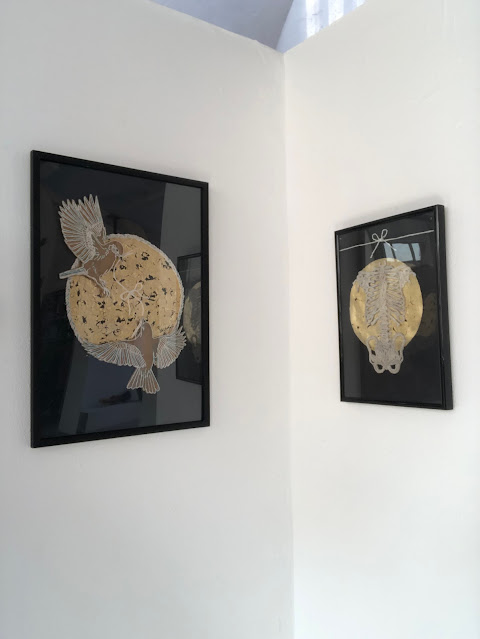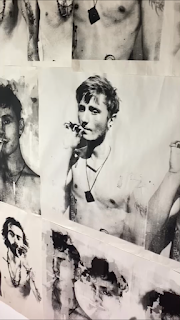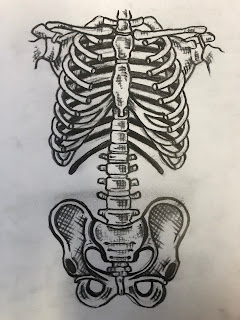PHOTOGRAMS
Today we were learning how to make phonograms which are images created without using a camera. To do this, we put objects onto photographic paper, which is a light-sensitive material, and then exposed it to light for a short period of time. We then place the paper into a developer liquid which makes the paper to darken where the light has hit it, causing the objects to show up white. They’re then put in water, & then a fixer which removes the green excess chemicals & makes the image last longer. These photograms create a black & white image of whatever is on the paper, which looks slightly similar to an X-ray image.
I did two experimental photograms, using chains, a plastic skull, a light bulb, a lighter, a necklace, nails & pegs, & a film photo. I did this to see the different outcomes produced when using a mixture of opaque, transparent, & translucent objects. Some objects need a shorter time period exposed to light than others. To work out how long objects would need, we use a blocking technique using a piece of card to cover a the image so only a small section is exposed to the light, then expose slightly more of the image to the light every 5 seconds. This is shown best in my next image of the hare.
The hare photo I produced by using a drawing I had done, printed onto acetate so that the light can pass though everything apart from the black lines. In this photo you can see each time interval it was exposed to the light. The top right was 5 seconds, & the bottom left was 30. From this we can see around 15 seconds was a suitable time span for the hare & leaves to show up well without being over/underexposed. The leaves show all the small folds & the folded layered parts where the leaf is thicker. I think this looks really interesting, so I produced another piece of the same image using the 15 second time span.
For this image however, I layered another acetate layer over the top of the hare so the image was doubled. I did this as I wanted to see if it would make the hare look more white instead of grey. I think this photo looks a lot older due to the background looking a slightly misty grey colour instead of black, which was probably due to the reflection of light from the gaps inbetween the layers of acetate. The leaves also showed up a lot lighter, which isn’t what I wanted. However I still think the image is successful overall, & has a more lifelike & realistic feel to it.






Comments
Post a Comment